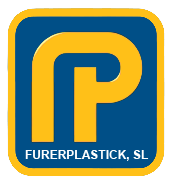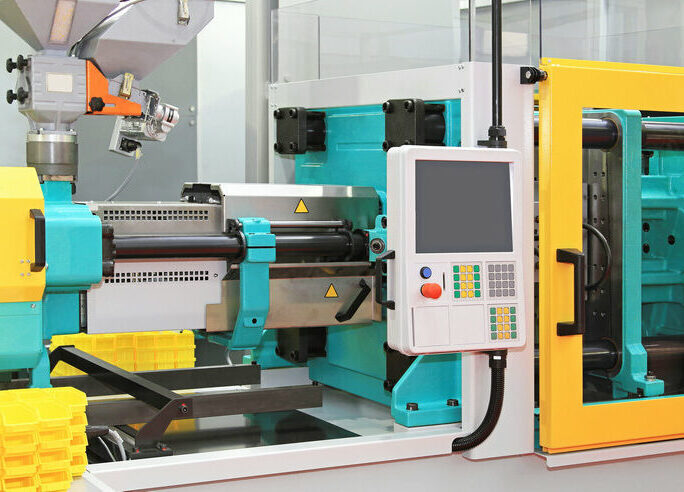Materials are of utmost importance in injection molding, as they directly affect the quality of the final product, the efficiency of the manufacturing process, compliance with specific requirements, and the ability for innovation and product development.
Materials play a vital role in the injection molding process. Choosing the right material will not only have the expected effect on the quality of the final product, it can also increase the efficiency of the manufacturing process, ensure compliance with specific requirements, and drive innovation.
In this article, we discuss some of the most commonly used plastic materials in injection molding, as well as their characteristics, properties, and disadvantages.
1. Acrylic (PMMA)
Poly(methyl methacrylate), or acrylic (PMMA), is a thermoplastic with good mechanical strength and light weight, notable for its transparency. Although it is not ductile, it shows resistance to breakage. Its ease of machinability is a great advantage, allowing for simple modifications and finishes after injection molding.
Disadvantages
However, PMMA is susceptible to scratches, which can affect its clarity and appearance. It also tends to accumulate oils and greases, worsening its clarity and surface properties. Additionally, it performs poorly in extreme temperatures.
Applications
Common applications of acrylic include decorative display cases, protective housings for solar panels, windows, and more.
2. Thermoplastic Polyurethane (TPU)
TPU is a versatile material with properties such as elasticity, transparency, and strength. It is characterized by having both soft and hard segments, which provides properties such as abrasion resistance and great chemical resistance, even at high temperatures.
Disadvantages
Its hardness and crystallinity can often pose problems during molding; you need an expert to handle this injection molding material.
Applications
It is used in the development of mobile phone cases, keyboard and shoe protectors, inflatable rafts, power tools, caster wheels, and more.
TPU can be found in many applications, for example in mobile phone cases.
3. Acrylonitrile Butadiene Styrene (ABS)
ABS is a widely recognized material for its strength, toughness, and chemical resistance. It is opaque and can be molded in various colors.
Disadvantages
Although it is inexpensive, it is not suitable for outdoor use or humid environments.
Applications
ABS is used in the development of automotive parts and high-impact sports equipment. It is also very popular for rapid prototyping due to its cost and functional capabilities.
4. High-density polyethylene (HDPE)
High-density polyethylene is a strong, tough plastic thermoplastic widely used in the development of numerous applications due to its affordable price and strength characteristic.
Disadvantages
HDPE is highly flammable and non-biodegradable, which in some cases makes it difficult to reintegrate into the value chain. Additionally, this polyethylene has poor weather resistance.
Applications
HDPE is mainly used in the development of plastic bottles, shampoo bottles, toys, recycling containers, and flower pots.
5. Low-density polyethylene (LDPE)
Compared to HDPE, Low-density polyethylene is a much softer and more flexible material. It is a material with high resistance to moisture and chemicals, is low-cost, and is suitable for use in contact with food, making it safe to use in the design of packaging for food content.
Disadvantages
Due to its low density, this material can be highly flammable and has poor weather resistance.
Applications
It is used as an injection molding material to create bottles, plastic bags, and various plastic wrappers, and much more.
6. Polycarbonate (PC)
Polycarbonate is a hard, tough material used in engineering and tends to be transparent. It is able to maintain its mechanical properties and appearance over a wide range of temperatures, so it performs well in high-temperature environments.
Disadvantages
After a long period of exposure to ultraviolet light, it may turn yellow. It is also sensitive to scratching.
Applications
Thanks to its excellent optical clarity, it is a very popular material in the manufacture of helmet visors, machine guards, and protective glasses. PC is also found in compact discs, security cassettes, bulletproof glass, and other electrical and telecommunications hardware.
7. Polyoxymethylene (POM)
POM is best known for its suitability for products requiring high precision. It has high dimensional stability due to its rigidity and boasts a low coefficient of friction and good lubricity, making it ideal for high-contact applications. Additionally, its properties remain stable even at very low temperatures.
Disadvantages
It is a difficult material to bond, has poor acid resistance, and is vulnerable to UV rays.
Applications
It is widely used in plastic injection molding of hard automotive components, such as handles and switches. Additionally, its applications include kitchen knives, gears, furniture, and ball bearings.
8. Polypropylene (PP)
Polypropylene is a thermoplastic polymer that is used in many applications thanks to its high impact strength and good moisture resistance.
Disadvantages
It can be degraded by UV rays, losing up to 70% of its strength in the sun. In addition to this, it can be highly flammable.
Applications
It is most common in the food storage and packaging industry due to the fact that it does not mix chemicals with food products.
Contaminations from recycled materials are most noticeable in translucent materials, such as Polypropylene

